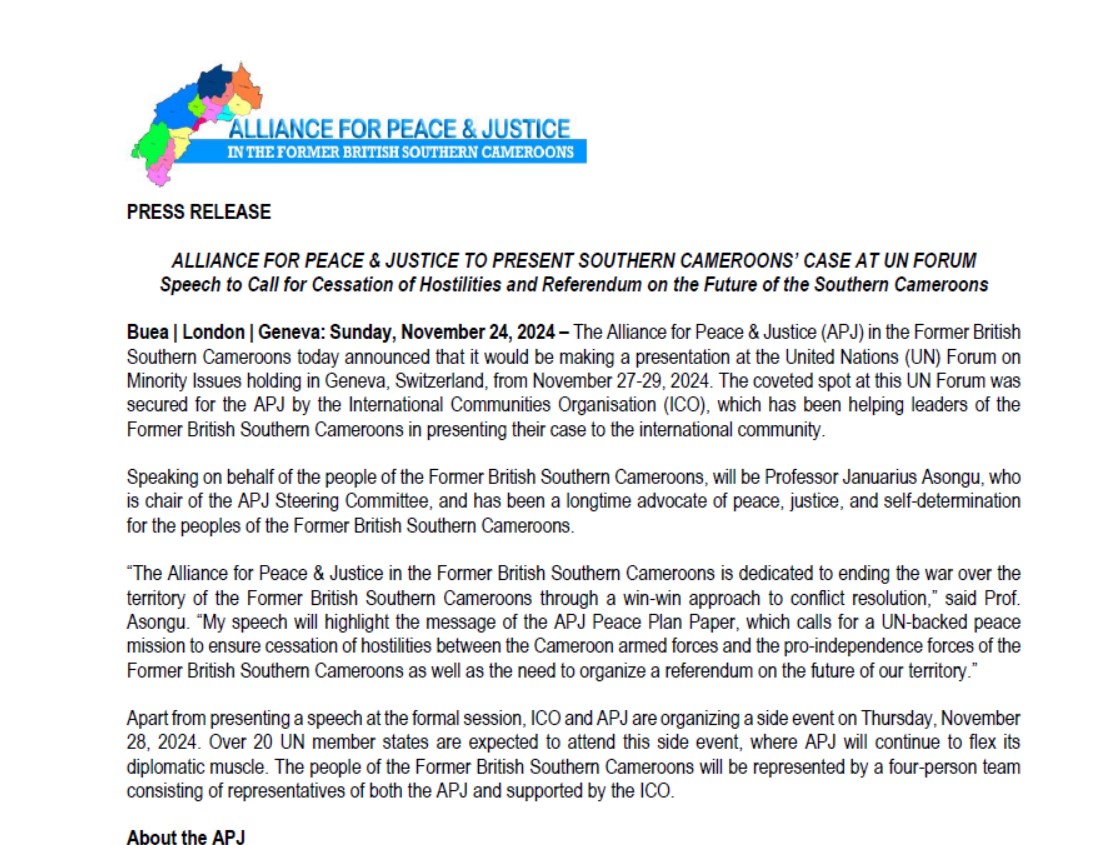A newly unveiled peace plan paper highlights urgent need for a negotiated ed to the war instead of future lessons from modern conflicts in Israel and Ukraine and now believe that Cameroon risks becoming the next battleground for advanced, devastating warfare if the ongoing Anglophone crisis remains unresolved. The Peace Plan Paper calls for immediate negotiations to prevent escalating violence and the further fracturing of the nation beyond where it is today
Modern Conflict: A Glimpse into Cameroon’s Future watching the battlefield in Iseal and Ukraine
The wars in Israel and Ukraine have demonstrated how accessible technologies, such as drones, phones, beepers and improvised explosive devices (IEDs), can devastate nations, target individuals, and cripple infrastructure. Disillusioned fighters in Cameroon are already learning these tactics, weaponizing inexpensive drones that can carry IEDs with devastating precision, as well as use communication devices to rain terror and death on their unsuspecting targets.
Even the highly secured residence of Israel’s prime minister has been targeted with such tools, forcing government leaders to hold meetings in underground bunkers. The peace plan warns that, without intervention, Cameroon’s top officials and separatist leaders alike could face similar decapitation strikes, with consequences rippling through all levels of society—from presidents to street cleaners.
A Conflict That Evolved in Complexity
The Anglophone crisis began in 2016 with poorly equipped resistance fighters armed only with spears and knives. Within two years:
- Sophisticated machine guns were in use, often sourced from illicit markets.
- Ammonium fertilizer became a resource for crafting IEDs, rendering military vehicles ineffective.
- Fighters adapted modern wartime tactics, including drone warfare, learned from global conflicts.
This rapid evolution underscores the urgency of addressing the crisis before technology-driven warfare intensifies further.
Historical Warnings Ignored
The All-Anglophone Conference of 1993 predicted that the marginalization of Cameroon’s Anglophone population would lead to unrest. These warnings were ignored, and by 2016, tensions had erupted into war. Since then:
- Over 6000 lives have been lost in firefights, with an additional 30,000 deaths from related causes.
- More than a million people have been internally displaced, while nearly 200,000 have fled as refugees to Nigeria.
- Trust between the government and Anglophone communities has been irreparably damaged.
Corruption and the Cycle of Revenge
Efforts to suppress rebellion through bribery of separatist leaders, drugs, and payoffs have only deepened resentment. The government’s payments to key rebel leaders have created opportunities for younger, angrier fighters who have lost family and friends to suppress their anger and wait for the right opportunity to strike, Thy are motivated not by political ideology but by revenge for lost family and friends and will take it out on the separatist leaders that have betrayed them as well as Cameroonian government that has once again failed to listen to them or the pain expressed in the All Anglophone conference of 1993. This cycle of corruption and retribution has disillusioned many, turning the conflict into a breeding ground for new and more devastating waves of violence.
Avoiding Self-Destruction
The peace plan paper offers a roadmap to break this cycle and avoid the catastrophic trajectory predicted by the lessons of Israel and Ukraine. Its key recommendations include:
- Rebuilding trust by addressing historical grievances, as outlined in the 1993 All Anglophone Conference.
- Preventing further militarization by promoting dialogue over warfare.
- Establishing a framework for sustainable peace that includes all stakeholders.
A Call to Action for Peace
The document is a stark reminder that Cameroon’s future hinges on its ability to learn from modern conflicts and act decisively. Without a negotiated settlement, the country faces not just continued violence but also the prospect of becoming a testing ground for new and devastating technologies of war.
The peace plan is more than a proposal—it is a warning of the self-annihilation that awaits if the status quo persists. Now is the time for leaders on all sides to commit to meaningful dialogue and ensure that Cameroon does not become another cautionary tale in the history of modern conflict.


